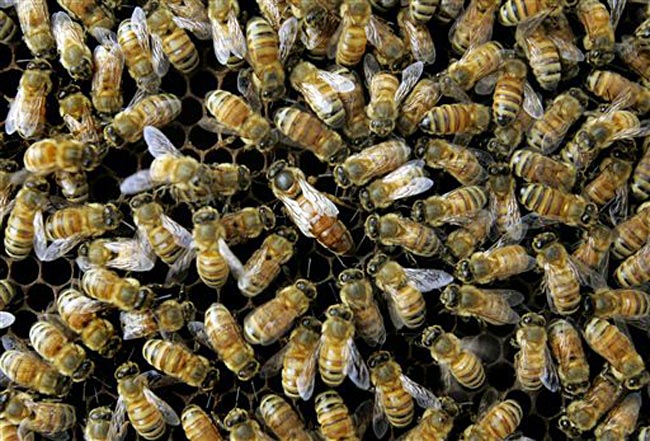Honeybees Can Learn Foreign 'Languages'

They may "speak" different languages, but Asian and European honeybees living in the same hive can learn to translate each others' dances to help one another find food, a new study reveals. Honeybees produce and store honey and build colonial hives from wax. The nine species of honeybees found worldwide diverged, in evolutionary terms, about 30 million to 50 million years ago and developed different dance "languages" that they use to tell each other where a tasty flower or choice nesting site is. "The scouts perform the so-called bee dances inside the nest," said study leader Shaowu Zhang of The Australian National University. "The coordinates of distant locations are encoded in the waggle phase of this ballet, with the direction and distance to the food source indicated by the orientation and duration of the dance." The duration of the "waggle dances" differs from species to species, even if bees are trying to communicate the same distance information. "It's these differences which we can think of as distinct languages," Zhang said. Zhang and his team mixed two species of honeybees, Asian (Apis cerana cerana) and European (Apis mellifera ligustica), together in a hive, and once they had adjusted to each other, the scientists trained one species to fly to a feeder set at varying distances from the hive. When European honeybees were trained to find the feeder , Asian honeybees were able to decipher the dances of their European cousins and interpret where the feeder was. The same was true when the experiment was reversed. "They can understand and communicate [with] each other," Zhang said. Whether bilingual bees occur in nature though is uncertain, because "the different species of honeybees do not live together in nature," Zhang told LiveScience. "We established an artificially mixed colony for our experiments." The team's findings are detailed online in the journal PLoS ONE. The study was funded by the National Natural Science Foundation of China and the Australian Research Council Centre of Excellence in Vision Science.
- Top 10 Amazing Animal Abilities
- Images: Backyard Bugs
- What A Bee Smells
Sign up for the Live Science daily newsletter now
Get the world’s most fascinating discoveries delivered straight to your inbox.

Andrea Thompson is an associate editor at Scientific American, where she covers sustainability, energy and the environment. Prior to that, she was a senior writer covering climate science at Climate Central and a reporter and editor at Live Science, where she primarily covered Earth science and the environment. She holds a graduate degree in science health and environmental reporting from New York University, as well as a bachelor of science and and masters of science in atmospheric chemistry from the Georgia Institute of Technology.









